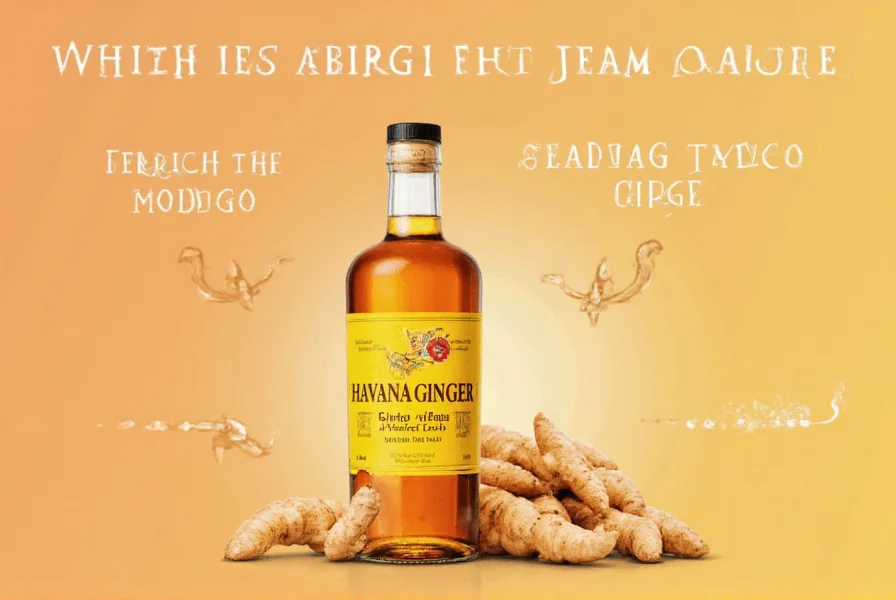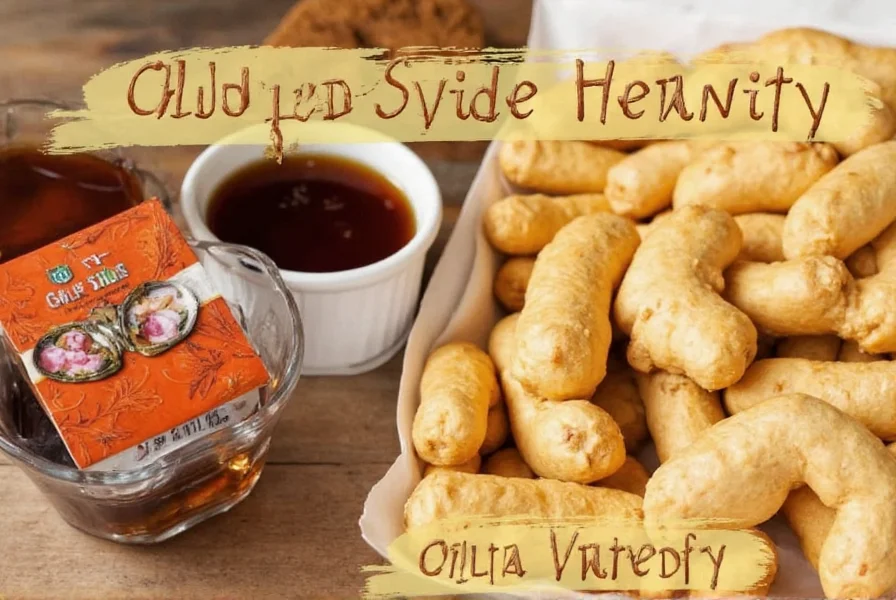"Havana ginger" is not a recognized ginger variety. The term likely stems from confusion between "Hawaiian ginger" (a specific cultivar) and Havana, Cuba's capital. Hawaiian red ginger (Alpinia purpurata) is a tropical ornamental plant sometimes mistaken for culinary ginger, while true ginger (Zingiber officinale) used in Cuban cuisine has no special "Havana" variety. This article clarifies the confusion and explores actual ginger types relevant to Caribbean cooking.
Many home cooks and gardening enthusiasts search for "Havana ginger," expecting a unique Cuban cultivar. This persistent misconception deserves clarification. True ginger (Zingiber officinale) grows throughout the Caribbean, including Cuba, but no distinct "Havana" variety exists in botanical records or agricultural databases. The confusion typically arises from two sources: mishearing "Hawaiian ginger" or assuming Cuba's capital has a signature ginger type.
Understanding the Havana Ginger Confusion
The mix-up between Havana and Hawaiian ginger occurs frequently in online searches. Hawaiian ginger refers to Alpinia purpurata, a flowering plant in the ginger family with striking red blooms. Despite its name, this ornamental ginger isn't used for cooking. Meanwhile, culinary ginger (Zingiber officinale) grows in tropical regions worldwide, including Cuba, but doesn't develop region-specific varieties like wine grapes.
Cuban cuisine does incorporate ginger, but as part of broader Caribbean flavor profiles. Traditional Cuban recipes typically use standard ginger root alongside other aromatics like garlic, onions, and citrus. The island's tropical climate supports ginger cultivation, but Cuban growers produce the same Zingiber officinale varieties found elsewhere in the Caribbean.
Hawaiian Ginger vs. Culinary Ginger: Key Differences
To prevent future confusion, understanding the distinction between these similarly named plants is essential:
| Characteristic | Hawaiian Red Ginger (Alpinia purpurata) | Culinary Ginger (Zingiber officinale) |
|---|---|---|
| Primary Use | Ornamental plant | Culinary and medicinal |
| Rhizome Edibility | Not suitable for consumption | Commonly used in cooking |
| Growth Regions | Hawaii, tropical areas | Worldwide tropical regions |
| Flower Appearance | Distinctive red cone-shaped blooms | Yellow-green flowers |
| Culinary Value | None | High - essential spice |
Ginger in Cuban Cooking Traditions
While no "Havana ginger" exists as a distinct variety, ginger plays a subtle role in authentic Cuban cuisine. Traditional recipes often feature ginger in:
- Mojito variations (less common than mint, but occasionally used)
- Certain seafood marinades, particularly for stronger-flavored fish
- Some dessert preparations, like ginger-infused flan
- Traditional medicinal teas for digestive issues
Cuban cooking typically uses fresh ginger root, grated or sliced, rather than dried powder. The flavor profile emphasizes balance - ginger appears in moderation alongside garlic, cumin, and citrus. Unlike Asian cuisines where ginger dominates, Cuban recipes use it as a supporting note.
Common Ginger Varieties You Might Encounter
When shopping for ginger, you'll likely find these actual varieties rather than any "Havana" type:
- Common Yellow Ginger - The standard grocery store variety with smooth skin and bright flavor
- Black Ginger (Krachai) - Used in Southeast Asian cooking, not Cuban
- Hawaiian Blue Ring Ginger - A rare culinary variety with purple rings
- African Ginger - Known for higher pungency and medicinal properties
- Wild Ginger - Different plant family, not true ginger
None of these carry official regional designations like "Havana." Ginger's genetic diversity is limited compared to plants like coffee or wine grapes, which develop distinct regional characteristics.
How to Select Quality Ginger
Whether you're cooking Cuban recipes or other cuisines, these selection tips ensure the best flavor:
- Choose firm roots with smooth, unwrinkled skin
- Smaller knobs often have more concentrated flavor
- Avoid roots with soft spots or mold
- Store in refrigerator for up to three weeks
- Freeze for long-term storage without quality loss
For Cuban-inspired dishes, pair ginger with traditional ingredients like sour orange juice, garlic, and cumin. The ginger should complement rather than dominate the flavor profile.
Why the Confusion Persists
The "Havana ginger" misconception continues for several understandable reasons:
- Phonetic similarity - "Havana" and "Hawaiian" sound alike when spoken
- Marketing creativity - Some vendors invent exotic names to sell products
- Cultural association - People assume tropical locations develop unique varieties
- Online misinformation - Incorrect claims spread through social media
Botanically, ginger doesn't develop distinct regional varieties like coffee or wine grapes. While terroir affects flavor slightly, these differences aren't significant enough to warrant specific names like "Havana ginger."

Practical Advice for Home Cooks
If you're searching for "Havana ginger" for a recipe, here's what to do:
- Use standard fresh ginger root from your grocery store
- For Cuban recipes, combine with citrus and garlic for authentic flavor
- Don't pay premium prices for "special" Havana ginger - it doesn't exist
- Grow your own ginger in warm climates using common ginger rhizomes
Understanding the reality behind ginger varieties helps you make informed choices without falling for marketing myths. The key is recognizing that while location affects flavor subtly, it doesn't create entirely new ginger types with proprietary names.
Is there actually a Havana ginger variety grown in Cuba?
No, there is no distinct Havana ginger variety. Ginger grown in Cuba is the same Zingiber officinale species found throughout tropical regions. While Cuba produces ginger, it doesn't have a unique cultivar designated as "Havana ginger." The confusion typically stems from mishearing "Hawaiian ginger" or assuming Cuba's capital has a signature variety.
What's the difference between Hawaiian ginger and regular cooking ginger?
Hawaiian red ginger (Alpinia purpurata) is an ornamental plant with beautiful red flowers, not used for cooking. Regular cooking ginger (Zingiber officinale) has the familiar knobby rhizomes used in kitchens worldwide. Despite the similar names, they belong to different genera within the ginger family and serve completely different purposes - one for decoration, the other for culinary and medicinal use.
How is ginger actually used in traditional Cuban recipes?
Ginger appears moderately in Cuban cuisine, typically in seafood marinades, certain dessert preparations like ginger-infused flan, and traditional medicinal teas. Unlike Asian cuisines where ginger dominates, Cuban cooking uses it as a supporting note alongside garlic, cumin, and citrus. Authentic Cuban recipes call for fresh ginger root, grated or sliced, rather than dried powder.
Can I grow what's called 'Havana ginger' in my garden?
You can grow standard ginger (Zingiber officinale) in warm climates, but there's no special 'Havana' variety to cultivate. Ginger grows well in USDA zones 9-12 or as a container plant elsewhere. Plant fresh ginger rhizomes with the eye buds facing up in well-draining soil. It requires partial shade, consistent moisture, and takes 8-10 months to mature. What you'll harvest is regular culinary ginger, regardless of what some sellers might call it.
Why do some websites sell 'Havana ginger' products?
Some vendors use 'Havana ginger' as a marketing term to make standard ginger products seem exotic or specialized. This is typically either a misunderstanding of the Hawaiian/Havana confusion or deliberate branding to justify premium pricing. Legitimate agricultural and botanical sources don't recognize 'Havana ginger' as a distinct variety. When purchasing ginger products, look for the scientific name Zingiber officinale to ensure you're getting authentic culinary ginger.











 浙公网安备
33010002000092号
浙公网安备
33010002000092号 浙B2-20120091-4
浙B2-20120091-4